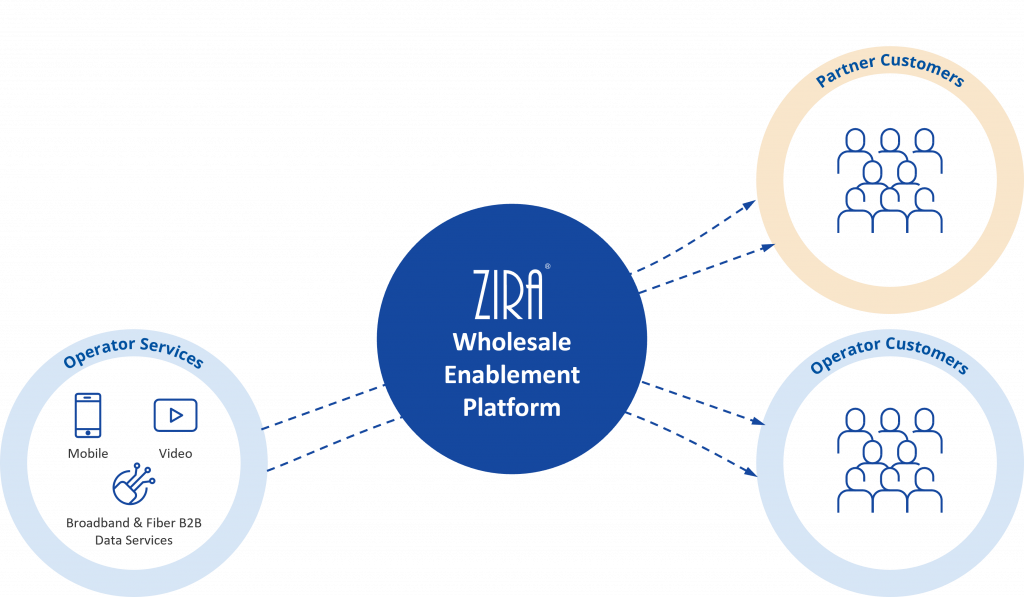
Alen Muslić
Chief Strategy Officer
From a skyrocketing demand for data to the advent of new technologies, the telecoms industry has seen a tidal wave of change in the past few years. As a result, Communications Service Providers (CSPs) now face a significant challenge to keep pace.
This is not just to meet the needs of their existing customers, but with Hyperscalers like Meta and Google eyeing traditional CSP territory, evolution is essential to ensure they are not displaced. One of the biggest drawbacks for CSPs looking to adapt to the new landscape is the limitations of their existing IT infrastructure. Legacy systems lack the agility needed to embrace new business models that are an essential part of staying competitive.
In this article, Alen Muslic, Chief Strategy Officer at ZIRA reviews the drivers for change across the industry, explores the IT infrastructure upgrades needed, and looks at the essentials for ongoing wholesale success.
Drivers for change
Before we look at how CSPs should change their infrastructure, we first need to understand why. With a clear picture of the market drivers, we can fully understand the scope of the changes necessary to stay competitive.
Let’s start by looking at the fiber space – one of the biggest revenue opportunities for CSPs. Analysys Mason estimates that by 2026 53% of build in Europe will be in the hands of alternative operators or carve-outs. What does this mean? It means incumbent CSPs who do not adapt will undoubtedly be unseated by new entrants with a more agile IT architecture.
As we discussed recently, capitalizing on wholesale fiber opportunities is one significant factor in ensuring new market entrants do not eat into CSPs’ market share. However, the threat of displacement is not the only driver for change. For many CSPs, the opportunities that come with evolution are a greater motivation.
Research from Omdia estimates that digital consumer services will present CSPs with a revenue opportunity of around $513 billion by 2027. The areas highlighted as the biggest opportunities are non-traditional CSP categories such as digital gaming and online video, and to capitalize on these, partnerships are essential.
Here, Hyperscalers like Amazon, Apple, Google, and Meta have the potential to enhance rather than threaten CSP businesses through wholesale partnerships. Jonathan Doran, principal analyst, Omdia, states, “Developing partnerships with such players is not only more pragmatic but will also serve to strengthen their own products and brands.” To make the most of these opportunities, however, CSPs must have in place an IT infrastructure that can support new wholesale strategies.
Current stack limitations
One of the key limitations of legacy infrastructure is that it lacks the agility to support many of the most lucrative opportunities open to CSPs. They are hamstrung by limited flexibility to open up to new partners or accommodate new services and changes, preventing them from responding to market demands or scaling efficiently.
The sluggishness of legacy systems when it comes to delivering new services and features delays time-to-market, a critical factor in a competitive industry that thrives on rapid innovation. Plus, trying to integrate modern platforms and applications into legacy systems often causes more problems than it solves, leading to data silos and inefficiencies that prevent CSPs from capitalizing on the opportunities they are looking to pursue.
Instead, CSPs need to look to a system that can deliver the agility and flexibility they need to thrive.
Unlocking all opportunities
A combination of the drivers for change and the current stack limitations demonstrates just how crucial it is for CSPs to embrace an alternative. Change is essential. But ensuring the agility to unlock all potential business opportunities from whatever system is introduced is even more important.
There are four considerations for CSPs when looking to implement a system that maximizes revenue opportunities:
1. Retail and wholesale ready
The very best retail BSS is not necessarily able to cater to wholesale needs. Enterprise architects often favor a one stack fits all approach. In practice, if it is not fully addressing wholesale needs, CSPs are left with similar limitations to those they experience with legacy systems. When it comes to designing the IT stack, wholesale should be treated as an independent, autonomous unit to ensure businesses do not cut off the full range of opportunities accessible to them.

2. Covers all business segments
CSPs have a diverse range of services and a unique approach to implementing them. A lot of IT stacks maintain a sole focus on telco products. To take advantage of new opportunities as they continue to arise, CSPs need to work with a provider that can cater to their specific IT needs across all business segments.
3. Future-proof agility
Having an IT stack that gives agility to move with market trends is an essential part of any CSP’s strategy. In terms of achieving this, a Cloud Native modular approach gives maximum flexibility for an operator to differentiate their offering and quickly adjust it to their changing needs. We recently looked at why the ODA framework offers an ideal way to accomplish this as well as unlock additional benefits.
4. Supports new business models
When it comes to maximizing revenues, partnerships are key – whether to expand the volume of opportunities for selling fiber services or to tap into new markets like gaming and online video. Managing the number of complex partnerships that will be part of a modern CSP’s business is potentially challenging. Therefore, an infrastructure that supports new models for wholesale partnerships is vital.
Conclusion
Implementing BSS systems that can fully support new wholesale models is more important than ever – taking full advantage of new opportunities and squeezing maximum revenue from them is at the center of any future-ready wholesale strategy.
At ZIRA, we have a strong heritage in helping CSPs transform their IT infrastructure to support a full range of business models. Critically, we understand the revenue potential of wholesale partnership opportunities and the specific infrastructure requirements needed to realize them.
Collaboration across the industry has become central to allowing innovation, and we believe that developing partnerships shouldn’t be a point of friction. For more on this, read our ABC of practical ways CSPs can build better business partnerships.
Do you have questions concerning your wholesale strategy and the readiness of your IT infrastructure? Schedule a chat with one of our experts.


